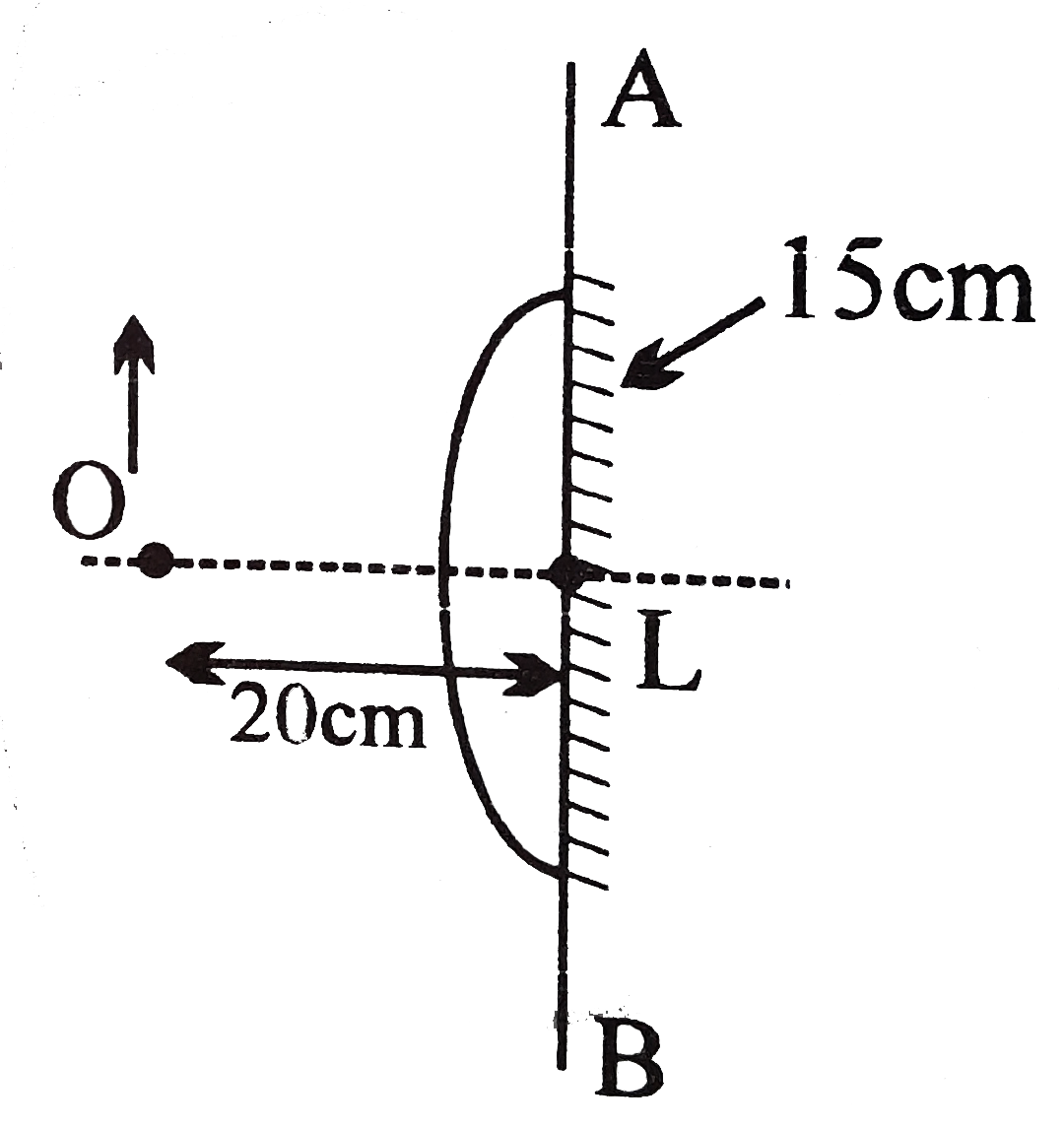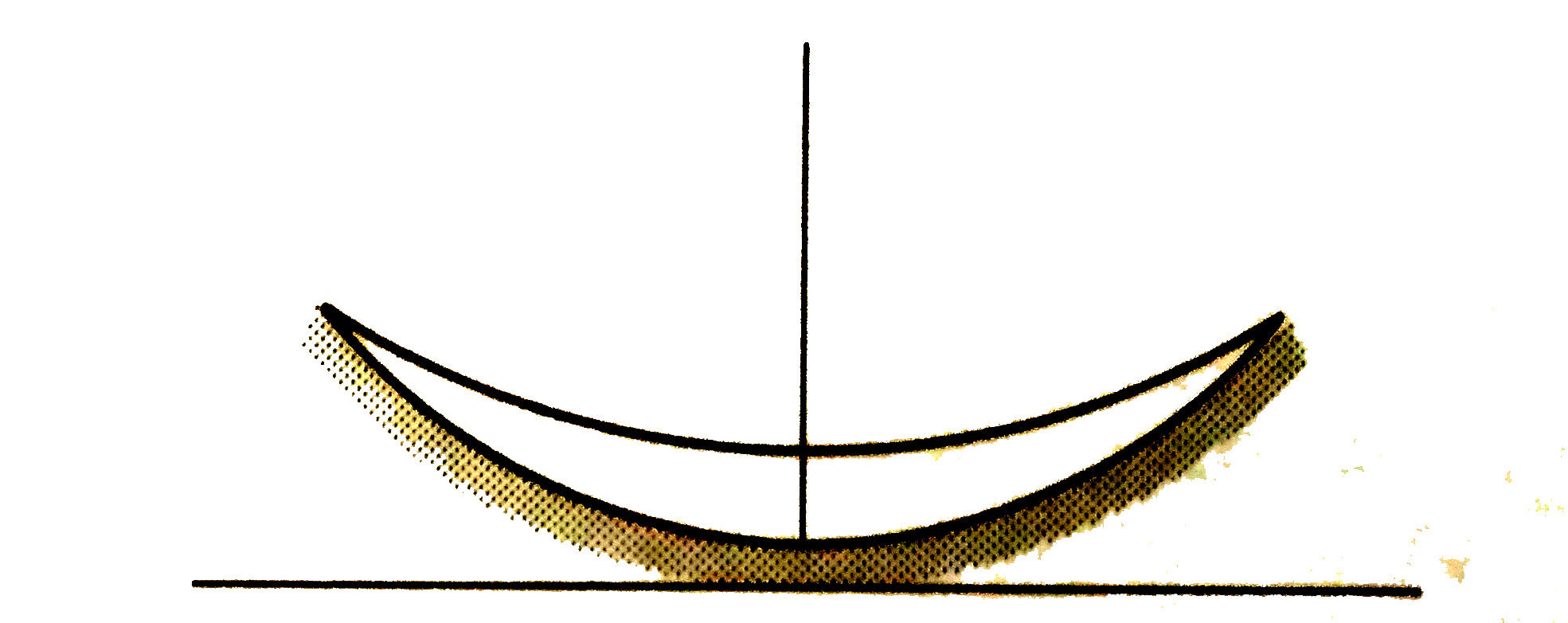A thin converging lens is formed with one surface convex and the other plane. Does the position of image depend on whether the convex surface or the plane surface faces the object ? Solution in Gujrati
Step by step video & image solution for A thin converging lens is formed with one surface convex and the other plane. Does the position of image depend on whether the convex surface or the plane surface faces the object ? by Physics experts to help you in doubts & scoring excellent marks in Class 12 exams.
Updated on:21/07/2023Topper's Solved these Questions
- GEOMETRICAL OPTICSBOOK - HC VERMACHAPTER - GEOMETRICAL OPTICSEXERCISE - Question For short Answer
1 Videos
- GEOMETRICAL OPTICSBOOK - HC VERMACHAPTER - GEOMETRICAL OPTICSEXERCISE - Objective 1
18 Videos
- GEOMETRICAL OPTICSBOOK - HC VERMACHAPTER - GEOMETRICAL OPTICSEXERCISE - Worked Out Examples
28 Videos
- GAUSS LAWBOOK - HC VERMACHAPTER - GAUSS LAWEXERCISE - Exercises
24 Videos
- LIGHT WAVESBOOK - HC VERMACHAPTER - LIGHT WAVESEXERCISE - Exercises
41 Videos
Similar Questions
Two converging lenses of unequal focal lengths can be used to reduce the aperture of a parallel beam of light without loosing the energy of the light. This increases the intensity. Describe how the converging lenses should be placed to do this.
View SolutionA point source of light is placed in front of a plane mirror.
View SolutionAn object is placed o the principal ais of concve mirror of focal length 10 cm at a distance o f8.0 cm from the pole. Find the position and the nature of the image.
View SolutionThe electric field in a region is given by →E=35E0→i+45E0→j with E0=2.0×103NC−1. Find the flux of this field through a recatngular surface of area 0.2m2 parallel to the y-z plane.
View SolutionFind the range of frequency of light that is visible to an average human being (400nm<λ<700nm)
View SolutionA thin converging lens is formed with one surface convex and the other plane. Does the position of image depend on whether the convex surface or the plane surface faces the object ?
View SolutionA plano-convex lens P and a concavo-convex lens Q are in contact as shown in figure. The refractive index o fthe material of the lens P and Q is 1.8and1.2 respectively. The radius of curvature of the concave surface of the lens Q is double the radius of curvature of the convex surface. The convex surface of Q is silvered.

An object is placed on the placed on the principal axis at a distance 10cm form the plane surface. The image is formed at a distance 40cm from the plane surfaces on the same side. The focal length of the system is
View SolutionAn object is placed 1m in front of the curved surface of a plano-convex lens whose plane surface is silvered. A real image is formed in front of the lens at a distance of 120cm. Then, the focal length of the lens is
View SolutionFocal length of the plano-convex lens is 15cm. A small object is placed at A as shown in figure. The plane surface is silvered. The image will form at
View SolutionA point object is placed at a distance of 20cm from a thin plano-convex lens of focal length 15cmIf the plane surface is silvered.the image will form at

View SolutionA point object is placed at distance of 20 cm from a thin plane - convex lens of focal length 15 cm . The plane surface of the lens is now silvered . The image created by the system is :-
View Solutionएक पतले उत्तल लेंस की एक सतह उत्तल तथा दूसरी सतह अवतल हैं । लेंस के पदार्थ का अपवर्तनांक 32 हैं । उत्तल सतह की वक्रता - त्रिज्या 20 cm तथा अवतल सतह की वक्रता - त्रिज्या 60 cm हैं । इसकी उत्तल सतह को सिल्वर कर दिया गया हैं । चित्र में दिखाए अनुसार इस लेंस को एक क्षैतिज तल पर रखा गया हैं । यदि लेंस की अवतल सतह पर पानी (n=43)भर दिया जाए तो पिन को अपने स्थान से कितना खिसकाना पड़ेगा ताकि उसका प्रतिबिम्ब फिर से पिन पर ही बने ?

View SolutionThe radius of curvature of the convex surface of a planoconvex lens is 12 cm and its refractive index 1.5. If the plane face of the lens is silvered, then the distance from the lens at which parallel rays incident on its convex surface converge is
View Solutionयदि एक पतले समतल-उत्तल लेन्स के उत्तल पृष्ठ की त्रिज्या 15 सेमी और उसके पदार्थ का अपवर्तनांक 1.6 हो, तो लेन्स की क्षमता होगी
View SolutionThere is a plano-convex lens whose radius of curvature for convex surface is 2.5 cm. Thickness of the lens is 9 cm. When object is placed at a certain distance from the convex surface then image is formed on the plane surface of the lens which serves as screen. What should be the magnification in this case? Refractive index is 1.5.
View SolutionA thin converging lens is formed with one surface convex and the other plane. Does the position of image depend on whether the convex surface or the plane surface faces the object ?
View Solution
